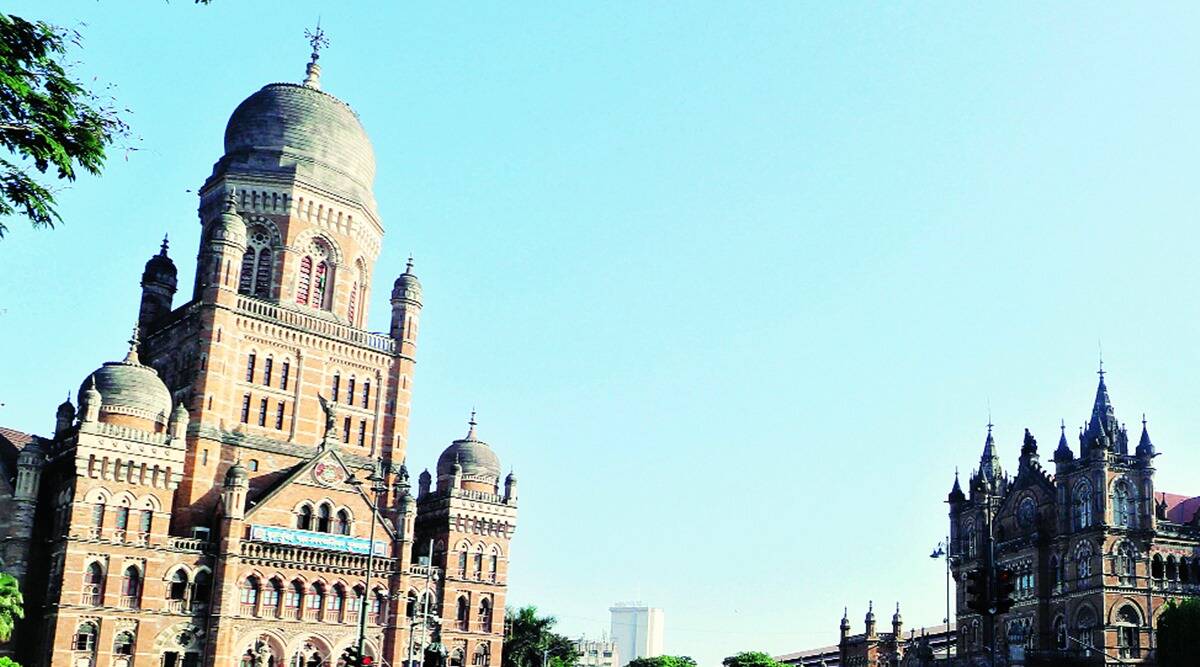 Chahal, in his budget speech, suggested turning the BMC into Mumbai’s sole planning authority to boost the civic body’s resources. (Express Archives)
Chahal, in his budget speech, suggested turning the BMC into Mumbai’s sole planning authority to boost the civic body’s resources. (Express Archives) The Brihanmumbai Municipal Corporation’s (BMC) shrinking revenue stream has caused concern for the country’s richest municipal body.
While the agency has claimed that the decline in revenues was due to decisions taken to combat the pandemic and provide relief to the affected sectors, it has also hinted that fellow government agencies, like the Maharashtra Housing & Area Development Authority (MHADA), are eating into its revenue stream. Therefore, the BMC in its budget has sought to be appointed as the single planning authority for Mumbai City.
“As of now for Mumbai City, apart from the Municipal Corporation of Greater Mumbai (MCGM), there are other planning authorities such as the Mumbai Metropolitan Region Development Authority (MMRDA), MHADA, Maharashtra Industrial Development Corporation (MIDC), Slum Rehabilitation Authority (SRA) and Mumbai Port Trust etc. These authorities plan the development of the layouts in their possession, while the MCGM provides all infrastructural facilities such as water supply, sewerage facility, roads, street lights and SWM services. This leads to the MCGM’s revenue loss and citizens have to suffer in case of any obstacle that may arise in the infrastructural facilities,” Municipal Commissioner Iqbal Singh Chahal said in his budget speech.
The Budget estimates for the financial year 2021-22 for revenue income is proposed to be Rs 27,811.57 crore, which is Rs 636.73 crore less than the Budget estimates of 2020-21. Last year, the BMC’s revenue estimate was Rs 28,448.30 crore, which it has subsequently revised to Rs 22,572.13 crore, a reduction by Rs 5,876.17 crore.
Chahal, in his budget speech, suggested turning the BMC into Mumbai’s sole planning authority to boost the civic body’s resources.
“It is felt necessary that the MCGM should be the single planning authority which will facilitate speedy development and also solve the problems with regard to infrastructural facilities of citizens residing in these layouts. Considering all the pros and cons of this decision, the MCGM is requesting the state government to reconsider their earlier decision and appoint the MCGM as a single planning authority for Mumbai,” Chahal said.
He added that increase in capital expenditure is not sustainable unless revenue collection is improved and new sources of revenue are added.
The lockdown imposed due to the pandemic caused shortfall in revenue following which the civic body had to revise its capital expenditure target from Rs 11,764.62 crore to Rs 10,903.58 crore. According to BMC officials, till December 31, 2020, the civic body has spent Rs 5,744.7 crore on capital works, which is about 48 percent of the budget estimate of 2020-21.
The BMC has also proposed several new measures like constituting fee-revision authority to decide periodical revision of various charges and fees to implement statistical analysis system (SAS) for real-time update of demand, collection and outstanding fees for property taxes, levy fire service charges and scrutiny fees.
For the first time, the BMC will take internal loans from its various departments to meet the fund requirements for development works. Officials said these loans will be taken from different departments. The civic body has proposed to raise Rs 5,876 crore through these internal loans.
Also, the BMC has planned to create fund for special projects by transferring Rs 4,000 crore from the accumulated surplus of other departments. The money from this will be spent on special projects like constructions of bridges that cost more than Rs 250 crore, rejuvenation of rivers like Poisar, Walbhat, Dahisar and Mithi, and constructing new pumping stations. These projects will require Rs 7,884 crore to be completed.
Several concessions granted to developers have also affected the civic body’s revenue. In a bid to give relief to developers, the BMC has decided not to recover development cess for two years. It is also exploring options of revenue from premium redevelopment of leasehold and municipal tenanted properties.